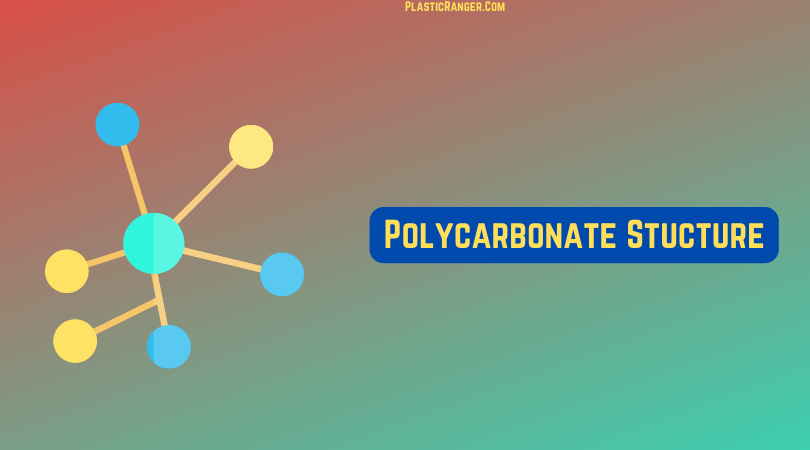Polycarbonate Structure
Alright, let’s take a deep dive into the world of polycarbonate, a material that’s a cornerstone in modern manufacturing.
We’re talking about a plastic that’s as versatile as vital. So, what makes polycarbonate (PC) so unique? The answer lies in its molecular structure and chemical composition.
What is Polycarbonate?
Polycarbonate is a thermoplastic polymer. Thermoplastic means it becomes pliable or moldable at a specific elevated temperature and solidifies upon cooling.
This characteristic makes polycarbonate an excellent material for various applications, from optical lenses to bulletproof windows.
Molecular Structure
The backbone of polycarbonate is built from bisphenol A (BPA) and phosgene (COCl2). These two components combine through condensation polymerization, creating long chains that give polycarbonate remarkable properties.
Bisphenol A (BPA)
BPA is an organic synthetic compound with the formula (CH3)2C(C6H4OH)2. It consists of two phenol groups connected by a carbon bridge (isopropylidene). Here’s a closer look:
- Phenol Groups: Aromatic rings with a hydroxyl group (-OH) attached.
- Isopropylidene Bridge: This carbon bridge links the two phenol groups, giving BPA its distinctive structure.
BPA is crucial because it provides rigidity and stability to the polycarbonate chain. The aromatic rings contribute to the polymer’s high strength and impact resistance.
Phosgene (COCl2)
Phosgene is a toxic gas but a vital reagent in controlled industrial settings. It reacts with BPA to form the carbonate linkages in polycarbonate.
The Polycarbonate Chain
The structure of the polycarbonate chain can be represented as:
[-O-(C=O)-O-C(CH3)2-C6H4-C(CH3)2-C6H4-O-]n
Here’s a breakdown of what this means:
- -O-(C=O)-O-: This is the carbonate group. It acts as a bridge between BPA units.
- C(CH3)2-C6H4-: This part is from BPA. The bulky and rigid chain part contributes to the polymer’s toughness.
- n: This represents the number of repeating units, which can vary to form polycarbonate chains of different lengths
The Polymerization Process
Polycarbonate is formed through a process called polymerization, specifically condensation polymerization. Here’s how it works:
- Starting Materials: The process begins with BPA and a compound called phosgene (COCl2). Phosgene might sound scary, but it’s crucial in this context.
- Reaction: BPA reacts with phosgene to form a polymer chain. During this reaction, a small molecule, usually hydrochloric acid (HCl), is released—hence the term “condensation polymerization.”
- Formation of Polycarbonate: A long chain of alternating BPA units is linked by carbonate groups (-O-(C=O)-O-).
Properties Stemming from Structure
Now that we’ve got the basics of the structure let’s see how this translates into the properties of polycarbonate:
- Transparency: The aromatic rings in BPA units allow the polymer to transmit light, making polycarbonate a clear plastic.
- Impact Resistance: The solid covalent bonds between BPA and carbonate groups provide high impact resistance. It doesn’t shatter easily, making it ideal for eyewear lenses and bulletproof glass applications.
- Thermal Stability: The rigid structure of the BPA units contributes to polycarbonate’s high melting point (around 155°C). It can withstand high temperatures without deforming.
- Electrical Insulation: Polycarbonate is an excellent electrical insulator, thanks to the nature of the covalent bonds in its structure.
How Polycarbonate’s Structure Affects Its Properties
Polycarbonate is a marvel of modern materials science, and its unique structure gives it an impressive range of properties. Let’s explain how its molecular structure influences its mechanical, physical, and thermal properties.
Mechanical Properties
Strength and Impact Resistance: Polycarbonate’s backbone comprises bisphenol A (BPA) and carbonate groups. With their bulky aromatic rings, the BPA units provide rigidity and toughness. This structure means polycarbonate can withstand significant stress without breaking, making it highly resistant to impacts. That’s why it’s used in bulletproof glass and safety goggles.
Flexibility: Despite its strength and density, polycarbonate is also somewhat flexible. The polymer chains can absorb and dissipate energy without snapping. This balance between rigidity and flexibility is crucial for applications requiring durable yet slightly flexible materials, like eyewear frames.
Physical Properties
Transparency: The orderly arrangement of BPA and carbonate groups allows light to pass through polycarbonate with minimal scattering. This clarity is why polycarbonate is used for optical lenses and transparent barriers. The aromatic rings in BPA don’t disrupt the light path significantly, maintaining the material’s transparency.
Lightweight: Polycarbonate’s molecular structure provides a high strength-to-weight ratio. The strong covalent bonds between the BPA units and carbonate groups mean the material can be both lightweight and robust. This is ideal for applications where weight savings are critical, such as aerospace and automotive industries.
Thermal Properties
High Melting Point: The rigid structure of the BPA units contributes to polycarbonate’s high melting point, around 155°C (311°F). This thermal stability means polycarbonate can be used in high-temperature environments without deforming or losing its structural integrity. That’s why polycarbonate is a preferred material for light covers and other components that need to endure heat from bulbs or sunlight.
Thermal Expansion: Polycarbonate exhibits low thermal expansion compared to other plastics. The solid molecular bonds resist significant expansion and contraction with temperature changes. This property ensures that polycarbonate components maintain their dimensions and fit tightly in applications like electronics housing and precision parts.
Modifications and Blends
Polycarbonate can be modified to enhance or tailor its properties for specific applications. For example:
- Glass-filled Polycarbonate: Adding glass fibers increases the material’s strength and stiffness.
- Blending with Other Polymers: Polycarbonate can be combined with ABS (Acrylonitrile Butadiene Styrene) to improve its impact resistance and processability.
Conclusion
Polycarbonate structure, characterized by BPA and carbonate linkages, gives it remarkable properties—transparency, toughness, and thermal stability. These properties have made it a versatile material in numerous industries. However, ongoing research and development are essential to address environmental concerns and to enhance the material’s performance further.
Understanding the structure of polycarbonate highlights why it is so widely used and opens the door to innovations and improvements in material science. Polycarbonate plays a critical role in modern life, whether in your sunglasses, car, or electronics. And now, you know exactly why.
Quick Navigation

